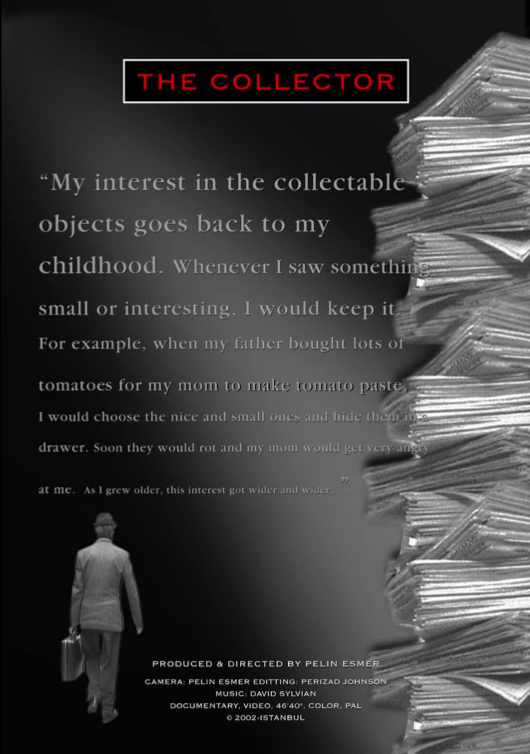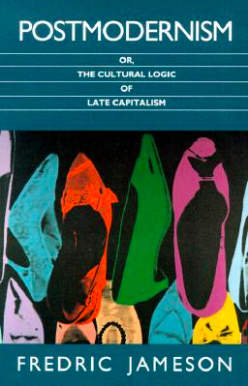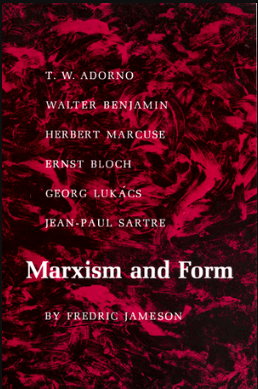*las notas son sobre la edición de Mario Hernández Sánchez-Barba de 1985.
“[…]y porque en este libro están agregadas y juntas todas o la mayor parte de las escrituras y relaciones de lo que al señor don Hernando Cortés, Gobernador y Capitán General de la Nueva España, ha sucedido en la conquista de aquellas tierras, por tanto acordé de poner aquí en el principio de todas ellas, el origen de cómo y cuándo y en qué manera el dicho señor gobernador comenzó a conquistar la dicha Nueva España, que es en la manera siguiente […]” (41). Así es como Hernán Cortés abre sus cartas de relación que después serán entregadas a Carlos V. La narración, desde el inicio no promete mucho, sólo una serie de cosas “agregadas y juntas”. Cortés escribe cuando la realidad se le ha acumulado, cuando aquello que está en la tierra es decible y escribible desde las letras de sangre y fuego que abren la puerta a la modernidad. Los motivos de Cortés son una maraña de enredos. Aún así, la voluntad del conquistador alcanza para saber que lo importante ya no era recoger el oro del suelo, “sino conquistar la tierra y ganarla y sujetarla a la Corona Real de Vuestra Alteza” (43), pues si los tantos secretos que Cortés percibe, una vez que se hace de lenguas en el “nuevo mundo”, son ciertos, entonces, para llegar al oro que se esconde, primero hay que hacerse de la tierra, despoblarla, poblarla y repoblarla. Las Cartas de relación de Hernán Cortés son menos la prolongación de la semiosfera de Colón y más la explosión y emergencia de muchas esferas. Cortés no mezcló dos mundos, mezcló una multitud de lenguas, desbarató con sinrazón iconoclasta y amistó con aquellos que muy pronto fueron amigos y luego a mayor velocidad se convirtieron en oprimidos.
Desde lo molecular Cortés movió aquello que parecía ya fijo para él, para su tropa, para las tierras del valle de eso que todavía no se llamaba México y para aquella ciudad por la que tantos lloraron y lloran aún. Cortés carga el hierro y el pesar del ángel de la historia, tal como Orozco lo representara. Si hay una generalidad, entre tantas, que parece hilar aquello que aparentemente está ordenado y demanda la mirada de los ojos del soberano en las cartas que Cortés le escribe, es la necesaria tarea de Cortés por contarlo todo. La prosa de las cartas está profundamente preocupada por las formas en que ha de contar para dar testimonio, pero también para hacer el conteo de aquello que se suma en los afectos, pero no se registra ni en el habla ni en los hábitos por completo. La tarea del conquistador es luego de cortar cuerpos, contarlos, su hacer es el del tirano que inmediatamente contabiliza su botín y sus pérdidas. Para que el relato de relación pueda contarse, al conquistador no le bastaba con sobrevivir, sino con encontrar los instrumentos que pudieran medir la veracidad de sus palabras, pero también incitar la curiosidad del que escuchare o leyere. Sucede así, que las descripciones de aquellos cuerpos que expulsaban a Cortés de Tenochtitlan luego de comenzada la guerra se presentan casi siempre con una palabra que asusta por su desmesura. En una ocasión, como en muchas otras, se dice de los que expulsaban a Cortés que eran “tanta multitud de gente por todas partes, que ni las calles ni azoteas se parecían con la gente; la cual venía con los mayores alaridos y grita más espantable que en el mundo se puede pensar y eran tantas las piedras que nos echaban con hondas dentro de la fortaleza” (161). A su vez, están otros cuerpos contados, los de “nuestros amigos que estaban con ellos [las tropas de Pedro Álvarado], que eran infinitos, pelearon muy bien y se retrajeron aquel día sin recibir ningún daño” (251). En la guerra, los “naturales” no eran unos ni otros, tampoco enemigos, sólo unos que eran amigos y su número era infinito y otros que eran multitudes. Los amigos pueden ser infinitos porque aquello que no tiene fin incita a ser contado, aunque al contarse uno fracase en el intento. En cambio la multitud, o aquello que es múltiple, asusta porque su número no invita a la negación de ningún fin para contabilizarse, sino que el número de los cuerpos de la multitud es un “mucho” que se aglomera en un cuerpo abstracto. Los soberanos, después de todo, se consuelan en el infinito porque en esa negación de lo interminable se encuentra la repetición de aquello que ellos no son. No hay, a su vez, ningún soberano al que no aterren las multitudes, un sin “número” que asusta por su exceso y enormidad.
Cortés no contabilizó con detalle muchas cosas en sus expediciones en los valles de Anáhuac y de Texcoco. Los cuerpos de quienes estuvieron en la guerra fácilmente se moldearon a las formas de cuantificar aquello que podría permitir la repetición de lo mismo (el infinito) y aquello que rehuía la contabilidad y la palabra del soberano (las multitudes). Otros cuerpos sí encontraron una gramática en el rotoso archivo del conquistador. De los primeros “regalos” que Cortés recibe de los señores de “Temixtitan” se dice que éstos fueron fundidos y “cupo a vuestra majestad del quinto, treinta y dos mil y cuatrocientos y tantos pesos de oro, sin todas las joyas de oro, plata, plumajes, piedras y otras muchas cosas de valor que para vuestra sacra majestad yo asigné y aparté, que podrían valer cien mil ducados y más suma; las cuales demás de su valor eran tales y tan maravillosas que consideradas por su novedad y extrañeza, no tenían precio ni es de creer que alguno de todos los príncipes del mundo de quien se tiene noticia las pudiese tener tales y de tal calidad” (132). Lo maravilloso no se funde pero por su singularidad, su “novedad y extrañeza” carecen de un peso y precio, son objetos únicos, algo que nadie más tiene y sin embargo, objetos que ya venían de otro territorio, que ya llevaban consigo una medida, una marca y una relación con un territorio.
En las cartas de relación, al menos las primeras, se puede contar todo aquello que se puede fundir, todo aquello que se presente como maravilloso y todo aquello que sea infinito. La fascinación que el mercado de Tlatelolco generó en los conquistadores no sólo descansa en el hecho de que las semejanzas recibieran a aquellos que se veían a sí mismos diferentes, de que hubiera “hombres como los que llaman en Castilla ganapanes, para traer cargas” (135), ni tampoco de que algunas cosas aventajaran por mucho aquellas de la ya ahora tierra lejana, como esa “miel de unas plantas que llaman en las otras islas maguey [del algo de Texcoco], que es mucho mejor que arrope” (135). El mercado cautivó, sobretodo, porque “Cada genero de mercaduría se venden en su calle, sin que entremetan otra mercaduría ninguna, y en esto tienen mucha orden” (136). El mercado y su “cuadriculación” y orden iba también, a su vez, cargando con una supuesta falta: “Todo se vende por cuenta y medida, excepto que hasta ahora no se ha visto vender cosa alguna por peso” (136). Aquello que se ve como ausente es la medida absoluta, el peso de algo valuado por el ojo del soberano. La semejanza no alcanza para revelar que lo que se vende no sólo descansa en un mecanismo de cuenta y medida, pero que esa cuenta y medida en realidad es también aquello que puede ser “mucho” sólo en su condición y estado abstracto de ser ominoso. Lo que se cuenta y se mide no es el infinito, pero el ominoso peso de aquello excede, que por múltiple se mide en intensidad y por grande se cuenta por su medida.
En el mercado de Tlatelolco se libró, tal vez, con mayor intensidad la guerra entre las multitudes de Tenochtitlan y los conquistadores y sus infinitos amigos. Alvarado apresuraba a Cortés para tomar el mercado, pues él se daba cuenta que “la gente de su real le importunaba que ganasen el mercado, porque aquel ganado, era casi toda la ciudad tomada, y toda su fuerza y esperanza de los indios tenían allí (261). Si el soberano murió por la propia mano de aquellos que lo miraban desde los pies de la pirámide, ahora que los amigos del soberano entraban con otros infinitos amigos, ¿qué habría que hacer para parar la debacle? Cortés dice ver la tristeza de la destrucción. Cuando la guerra ya es destrucción y exceso los conquistadores “hallábamos los montones de muertos, que no había persona que en otra cosa pudiese poner los pies; y como la gente de la ciudad se salía a nosotros, yo había proveído que por todas las calles estuviesen españoles para estorbar que nuestros amigos no matasen a aquellos tristes que salían, que eran sin cuento” (291). El suelo y las islas son ahora de carne y hueso y cada cuerpo que escapa, escapa ya no sólo de la destrucción, sino de la “decisión” de un soberano, que guarda a sus amigos de proseguir en la empresa de destrucción y muerte. Los que escapan van “sin cuento”, sin número, como estuvieron en multitud, pero ahora también, probablemente sin “cuento”, sin voz, sin historia. La misericordia del soberano radica en saber doblegar la voluntad, en asustar antes que en destruir por completo, pues viendo a los que resistían y no se rendían, Cortés dice que “mandé soltar la escopeta y en soltándola, luego fue tomado aquel rincón que tenían [los que resistían] y echados al agua los que en él estaban; otros que quedaban sin pelear se rindieron” (291).
Con la destrucción de Tenochtitlan Cortés le puso letras y gramática al fuego y a la sangre de la historia de la modernidad. Igualmente, Cortés consiguió imponer una medida, un peso a lo múltiple (que se contaba y se medía), pues para ahora darle peso a su autoridad, todo aquel que dudara de esto sólo habría de ver y oír sobre la destrucción de la gran ciudad. A los primeros incrédulos el conquistador los hace “llevar a ver la destrucción de la ciudad de Temixtitan, que de verla, y de ver su fuerza y fortaleza, por estar en el agua, quedaron mucho más espantados” (298). Así fue que la destrucción se convirtió en moneda en boca de las lenguas de Cortés, así fue que su voz adquirió peso incluso en los oídos de Carlos V, y aún así, del mucho espanto de todos los que se escaparon, algunas veces más y otras veces menos, habría de volver siempre el espectro de lo múltiple.







